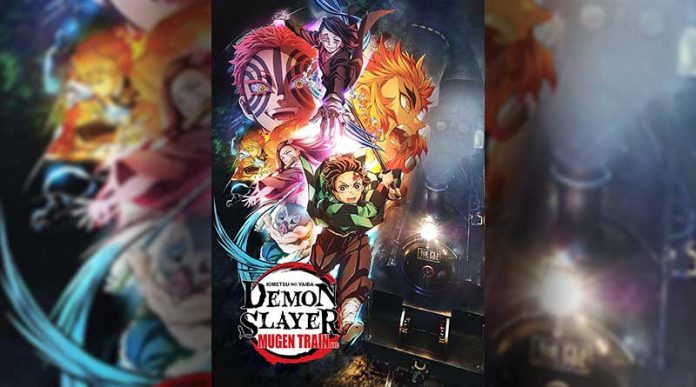By Sara Hameed
SHARJAH – A trip on the Mugen Train is a heart-lunging test of our willpower. “Demon Slayer: Mugen Train,” directed by Haruo Sotozaki, was initially released as a film in 2020. It was adapted into a television arc that aired from Oct. 10 to Nov. 28, 2021, kickstarting the second season of the “Demon Slayer” franchise. It is based on Koyoharu Gotouge’s manga series of the same name, set in Taishō-era Japan, between 1912 and 1926.
In “Demon Slayer: Mugen Train,” we follow Kyōjurō Rengoku (Satoshi Hino) from the Demon Slayer Corps, as he is assigned to investigate the mysterious disappearances happening aboard the “Mugen” (Infinity) Train. The series’ tritagonists, Tanjiro Kamadō (Natsuki Hanae), Inosuke Hashibira (Yoshitsugu Matsuoka), and Zenitsu Agatsuma (Hiro Shimono) are dazzled when they run into him in the cabin.
Although Rengoku is the newest character to be introduced, we quickly get attached. Not only is Kamadō’s admiration for him endearing, but his kind, gentle demeanor, a stark contrast from his eccentric character design, shields us from the demons lingering beneath the flickering bulbs. Gotouge, who is also the illustrator, is renowned for their unconventional character looks. Rengoku is meant to resemble a flame, yet his white cloak, meekly smiling face, and downturned fiery hair signify he is a humble friend.
The intense battle scenes make use of CGI, and we hold our breaths as Kamadō and Hashibira synchronize their breathing. The exhilarating soundtrack is purposely reminiscent of the clacking of a train, speeding while the pair wobble atop the thrilling ride, struggling to stay awake. Even if one watches “Mugen Train” as a standalone, there is enough exposition expertly interweaved to familiarize them with the story and its characters.
The series also takes heavy inspiration from Shintoism by offering us a glimpse of the graceful “Hinokami Kagura” as an example. Kagura is music and dance dedicated to the gods in Shinto rituals, and Hinokami is named after Amaterasu, the sun goddess in Japanese mythology.
Rengoku is the hero in our tritagonists’ eyes; hence, this is why they serve as our lens. Kamadō is the frustrated onlooker, wishing he could somehow help. With twisted licks of struggle at the appearance of a villain that fills both, us and Kamadō with pure horror, of cleverly-pondered solutions, and teetering dangerously close on the edge of mortality; “Demon Slayer: Mugen Train” vows to take you on a dreamlike journey from Tokyo to Infinity.


















